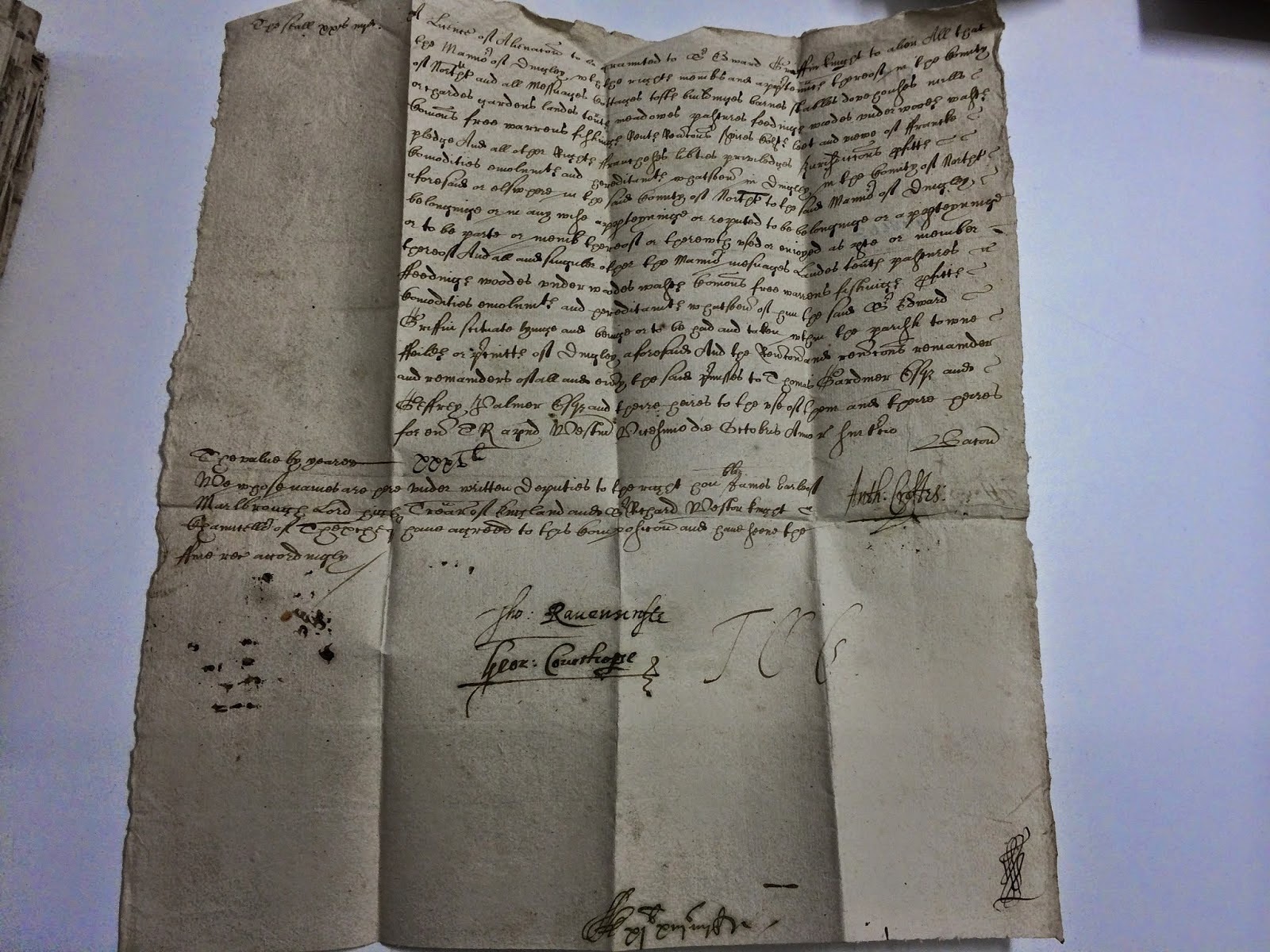Treasures from Worcestershire’s Past: ~27~ Croome – the Lord Keeper’s docquets
- 31st May 2014
This week’s Treasure is a large series of docquets, which form a part of the Croome collection – the archives of the Earls of Coventry:
As part of the official papers of Sir Thomas Coventry (1578-1640) 1st Baron of Allesborough, Lord Keeper of the Great Seal of England held in the Croome collection are a series of around 22,000 chancery docquets authorising grants to be made under the Great Seal.
Sir Thomas Coventry, Lord Keeper of the Great Seal under Charles I
Following his education at Balliol College, Oxford, Sir Thomas had a very busy career in Law, including positions such as Counsel for the Company of Apothecaries; Justice of the Peace in Surrey and Middlesex; Autumn Reader and High Steward for Cambridge, Coventry, St Albans, Kingston-upon-Hull and Bath. In November 1616 he was appointed as Recorder of London and at various times in his life he also held the position of Recorder for Coventry and Boston. In March 1617 he was appointed as Solicitor General, the same year in which he was Knighted. He was elected as MP for Worcestershire in 1621 and later that year was appointed as Attorney General. He became Custos Rotulorum for Worcestershire in 1624. In 1625 he was appointed to perhaps his most prestigious position, that of Lord Keeper of the Great Seal of England, which is how we come to have the Lord Keeper’s docquets at Worcestershire Archive Service.
One of the many boxes of docquets held at Worcestershire Archive Service
Docquets were produced as part of the administrative procedure by which grants, commissions or patents were issued, which would have been under Lord Coventry’s remit as Lord Keeper of the Great Seal
The docquets provide a useful guide to the contents of the Patent Rolls for Charles I’s reign. These summaries offer the quickest means of discovering when and to whom royal grants were made and they also provide a valuable insight into the workings of central government and the patronage system during this age. Furthermore, because grants were only enrolled if the grantee was willing to pay, these docquets list some grants which do not appear on the Patent Rolls themselves.
An individual docquet for a licence of alienation
The documents cover a fascinating, wide-range of subjects and are a brilliant resource for researchers of many different topics. The docquets include commissions of bankruptcy; licenses of alienation; licenses to eat flesh (not as scary as it sounds!); grants and patents; pardons; inquisitions post mortem; commissions of sewers; licenses to sell tobacco and wine; warrants; writs and royal declarations amongst many others.
The docquets can be searched at file level using our online catalogue, however; users wishing to get a more detailed look at the wide range of information provided by the docquets can use the calendars, which were produced by the List and Index Society and cover 18,900 of the docquets we hold. These calendars are spread across four volumes and they provide summaries of the information contained in each docquet and list names and places provided. The calendar volumes are held in paper format only and are available to view by visiting the Original Archive Area at The Hive. The docquets themselves are held at reference 705:73 BA14450/342-353; 373-436.
?


.jpg)